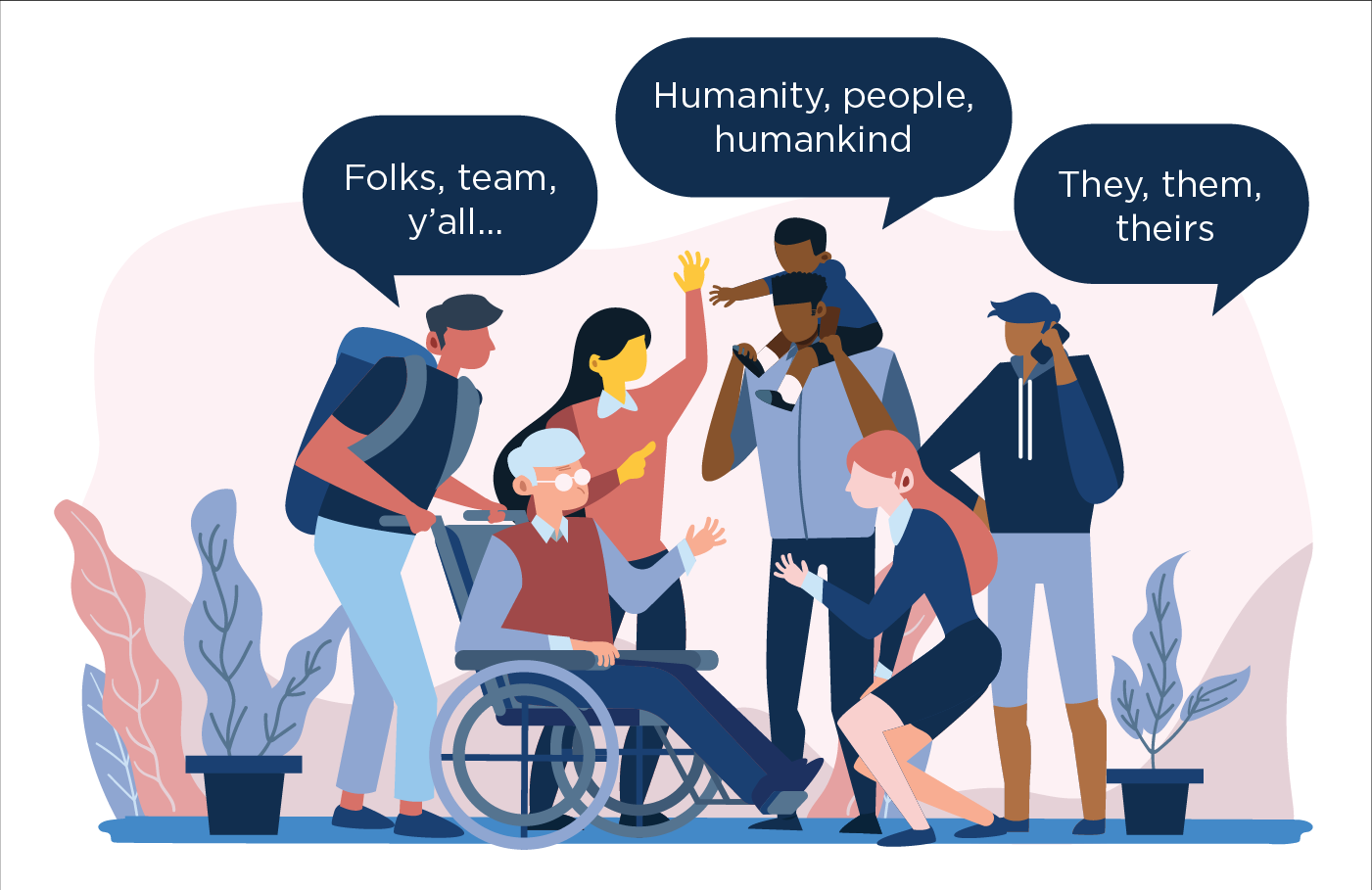Bringing Inclusive Language into IT
 In recognition that language is essential to an inclusive and welcoming environment for everyone, the Office of Information Technology (OIT) is piloting an Inclusive IT Language Guide for the IT community at UCI. The document guides terminology choices in the technical world, but its intention is broader. By respecting diverse perspectives and experiences through inclusive language, OIT helps sustain a thriving environment for ideas, innovation and creative problem-solving.
In recognition that language is essential to an inclusive and welcoming environment for everyone, the Office of Information Technology (OIT) is piloting an Inclusive IT Language Guide for the IT community at UCI. The document guides terminology choices in the technical world, but its intention is broader. By respecting diverse perspectives and experiences through inclusive language, OIT helps sustain a thriving environment for ideas, innovation and creative problem-solving.
The guide was developed out of discussions within OIT's Architectural Review Board - an internal group that oversees campus technology standards - about how some common IT language detracts from the value of inclusiveness. Employees Seth Roby, Rachel Tam, Andrew Laurence, Marina Arseniev, Robert Gallegos, and Noah Margolis formed a workgroup to research exclusive or offensive terminology and create a guide to invite more inclusive language. They hoped it would begin a conversation about historical use of problematic phrases and words, and to explore updated terms that are more explanatory, effective and inclusive.
"We wanted to guide the reader through the principals and goals, building an approach that makes sense from both technical and societal perspectives," said Andrew Laurence, systems analyst. "As a result, the guide is more than a list of word substitutions."
After creating an initial draft, they expanded the discussion to stakeholders in OIT and across the campus, including UCI's Office of Inclusive Excellence, LGBT Resource Center, Disability Services Center, and DECADE Mentors. These groups became allies and content contributors, helping the document take shape. UCI also connected with IT colleagues across the University of California to learn what similar discussions were taking place at other campuses. This broadened perspective helped the group to continue to evolve and improve the guide.
"Vice Chancellor [of Equity, Diversity and Inclusion] Haynes was very encouraging and helped point us in the direction of other groups who could also give us feedback," said Seth Roby, senior software engineer. "Everyone [we spoke with] had more to add to the list or a different take on something we hadn't thought of."
One unexpected outcome of this process was the discovery that replacing legacy terms helped more accurately describe the object or process that was taking place. "Oftentimes you can actually get clearer terminology by updating the terms," said Laurence. "For example, 'allow' and 'disallow' precisely reflect the desired behavior. They replace the metaphor terms 'blacklist' or 'whitelist', which don't directly relate to the technical action."
Assistant Director of Enterprise Student Management Systems Rachel Tam hopes that this guide will begin opening doors for more conversations of inclusivity, and that it can be adapted as the conversation evolves, "It is a living document, we want to have it change and grow over time," said Tam. "How it fits into society will change, as society is changing."
The group affirms that adopting new terms and making changes to commonly used language is a process to take part in, not something learned overnight. Small changes to behavior now, can lead to large strides in progress as time goes on. They hope others will use the guide as a starting point to begin having conversations with co-workers about why making these changes are worth the initial struggles that come with altering ingrained habits.
"I hope we'll see people coming to us saying 'this isn't on the list, how can I add it?'" said Tam. "I want people to be thinking about why alternative terms might work better. My initial fear was that people would see these suggestions and think 'that's dumb', but ultimately I hope that they are able to see past the discomfort of change, and to refocus on inclusivity and on creating safe spaces for everyone."
"After the guide came out we had co-workers coming to us asking about certain terms or phrases we included, wondering if these specific ones are really in need of changing," said Roby. "Our general response has been that you have to decide for yourself what seems right and in what contexts, but if you're asking this question at all, then it's worthy of discussion and discovery."
Now that the guide has been launched in UCI's IT community, their hope is that it can be a useful tool for the whole UCI campus and beyond.
"I'm proud of UCI's staff for their forward-thinking in developing this guide," said Tom Andriola, Vice Chancellor for Information Technology and Data. "It demonstrates our community's commitment to inclusion and mindfulness about how language can affect those around us. We should all become more cognizant of the language we use and the impact it has on creating a welcoming environment that appreciates diverse thought, strengthens engagement, and promotes innovation."
*Note: this article was updated 7/29/21 to include the names of additional workgroup members